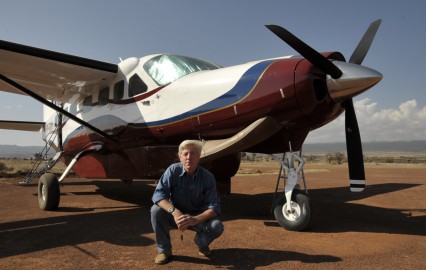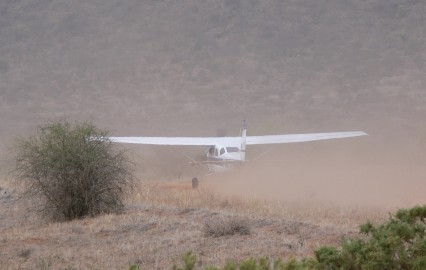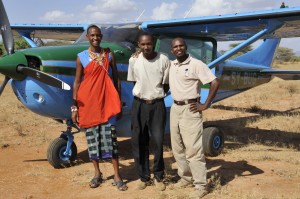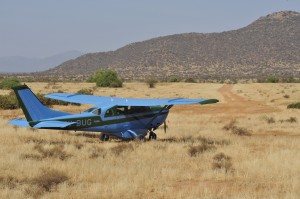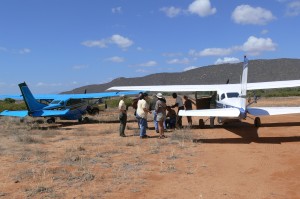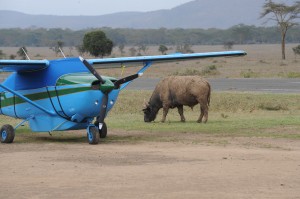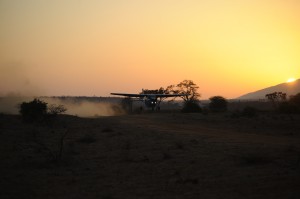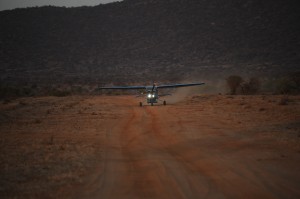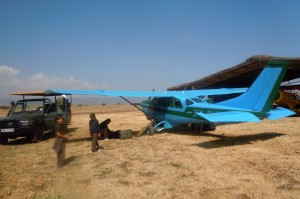Travel by plane on Safari
Roads in Kenya and Tanzania are fairly horrendous.
They will beat you up, beat up your equipment, cover
you in a lovely, light red or tan dust, and waste hours
of your precious safari days.
These are just a few reasons we fly on safari.
Flying with Mark Ross
Mark Ross owns and flies his own turbine 14-seat aircraft. Both Mark and the aircraft are rated for night flying and instrument flying, so total safety and flexibility is guaranteed on every safari. And since the aircraft will never be flying empty legs during your safari the operation of the plane couldn’t be more efficient.
Typically, having your own personal plane and pilot with you for the duration of your two week safari only adds about $475 per person. Flying the entire safari is easier, safer, far more relaxing, cleaner and, of course, gives you about 400% MORE TIME in the parks and reserves than if you were to drive the safari.
Somewhat surprisingly, with the Cessna Caravan you can also bring more luggage than were you to be traveling by road. The Caravan has four cargo holds as well as hundreds of cubic feet of storage in the cabin area.
When you range father afield, to Rwanda or Uganda to see the gorillas, to Tanzania to visit the Serengeti, Zanzibar, or to climb Kilimanjaro, you’re savings of both money and time are even greater.
Traveling by air
Chartering an aircraft in Kenya is certainly possible and easily done, but you’ll end up paying more than double the price you would pay if the plane stays with you for your entire safari. The cost is more than double because the aircraft will return to Nairobi after dropping you off, and then will come back out, empty, to collect and you and take you to your next destination. Afterwards, the aircraft will again return to Nairobi empty.
Flying with the local airlines is great, but the companies don’t fly to many of the more interesting places and, of course, you must match their schedules and days.
